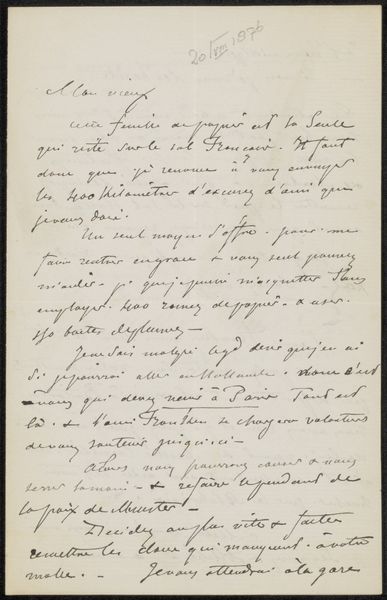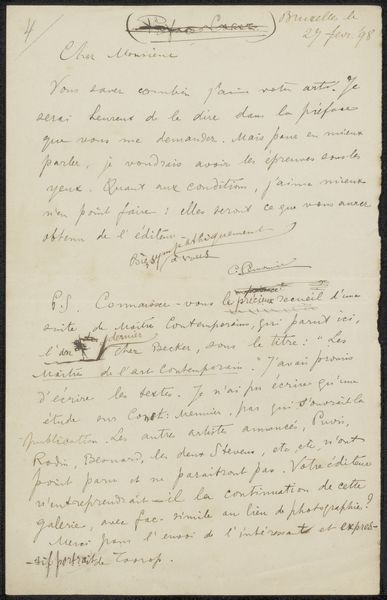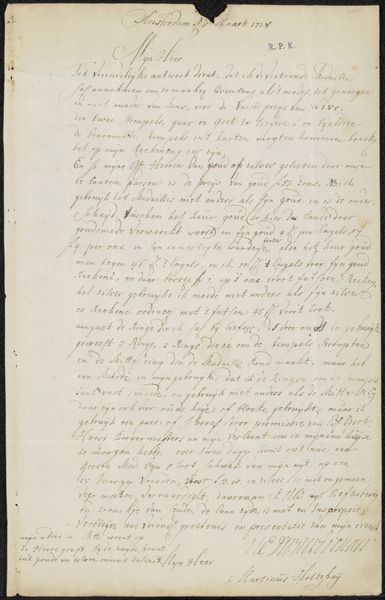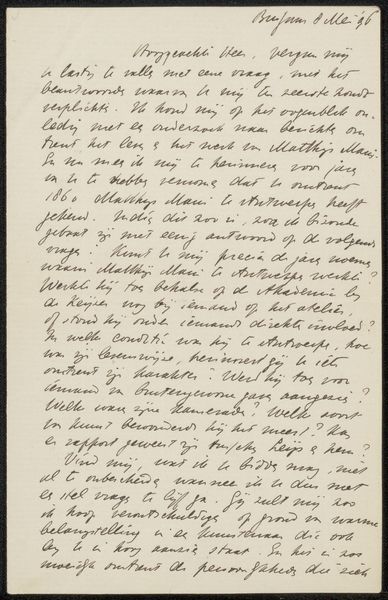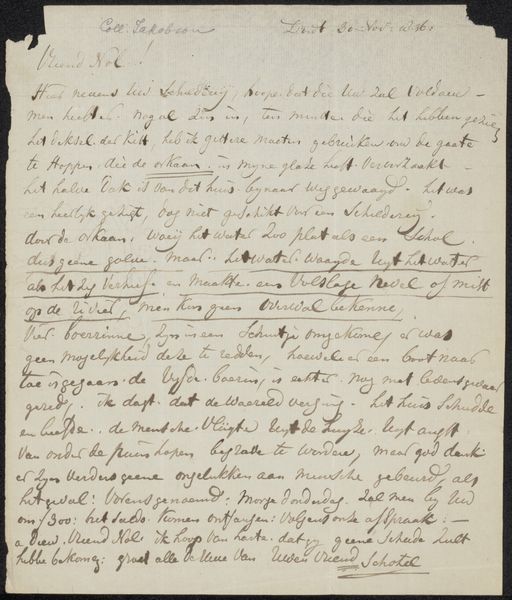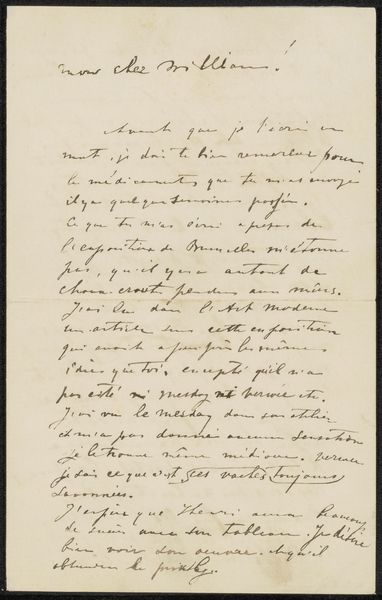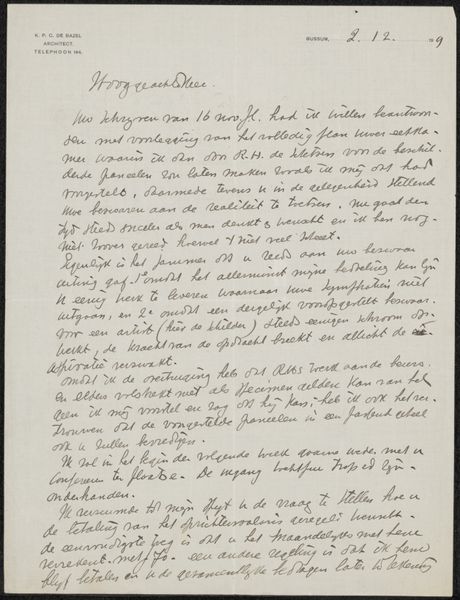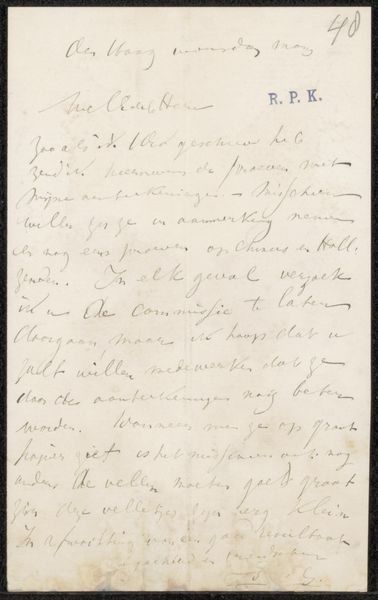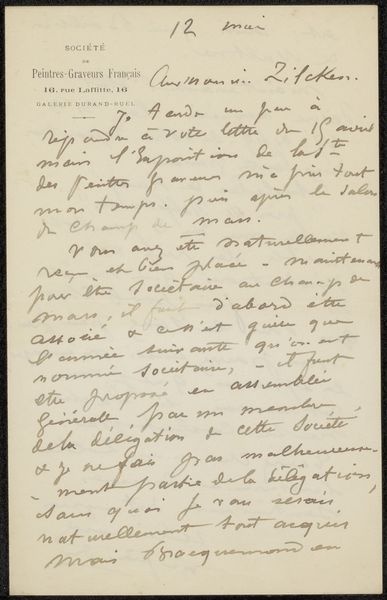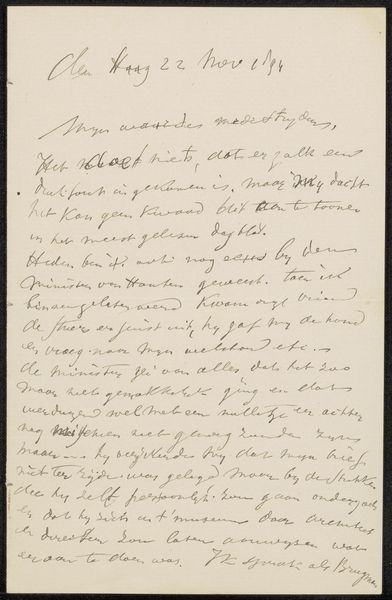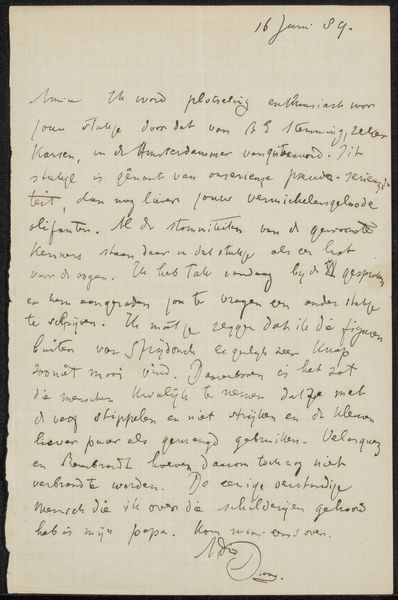
drawing, paper, ink, graphite, pen
#
drawing
#
hand-lettering
#
hand drawn type
#
hand lettering
#
paper
#
ink
#
pen work
#
graphite
#
pen
Copyright: Rijks Museum: Open Domain
Curator: I’d like to introduce "Brief aan Pieter Haverkorn van Rijsewijk," a letter by Adolphe Poitout, possibly dating between 1905 and 1907. It combines graphite and ink on paper. Editor: Immediately, I'm struck by its delicacy. The density of text creates an intricate, almost textile-like pattern across the page. It’s visually quite calming, surprisingly. Curator: Observe how Poitout utilizes varied stroke weights in the pen work, almost playing with positive and negative space within the hand-lettering. Note especially the contrast between the casual opening and the controlled script of the body. Editor: It gives a glimpse into a bygone era of handwritten correspondence, doesn't it? I can almost feel the weight of the news it carries. The reference to the death of "Jeugkind," I assume, Johann Barthold Jongkind the painter—suggests a moment of collective artistic reflection. The inquiry regarding Jongkind’s birthplace even more. This feels less like a simple letter and more like a personal act of preservation, linking artistic lineage to specific locales. Curator: Exactly. It's about lineage, both personal and artistic. Notice the elegant looping ascenders and descenders—purely decorative elements, they establish visual rhythm. It has to be said, such hand-lettering carries social signals of class and education. Editor: The constant seeking after Jongkind’s real place is meaningful: a man is from a place, he will die, the news of his passing will cross the world by printed word. The sender then replies with the desire to clarify origins. This desire gives off real implications as to the place we occupy after passing. It shows that, by knowing where a man came from, you have that much of him in the future. Curator: It really boils down to structural tensions, right? This piece creates contrasts between spontaneity and control, density and openness, information and ornamentation. Poitout balances opposing elements into a cohesive visual statement. Editor: It serves as a testament to the endurance of cultural memory. Poitout's script bridges time, whispering secrets about art, place, and mortality, I love to explore art through what symbols it shows of emotional impact through history. Curator: Precisely, the construction is very striking, offering new aesthetic revelations.
Comments
No comments
Be the first to comment and join the conversation on the ultimate creative platform.
